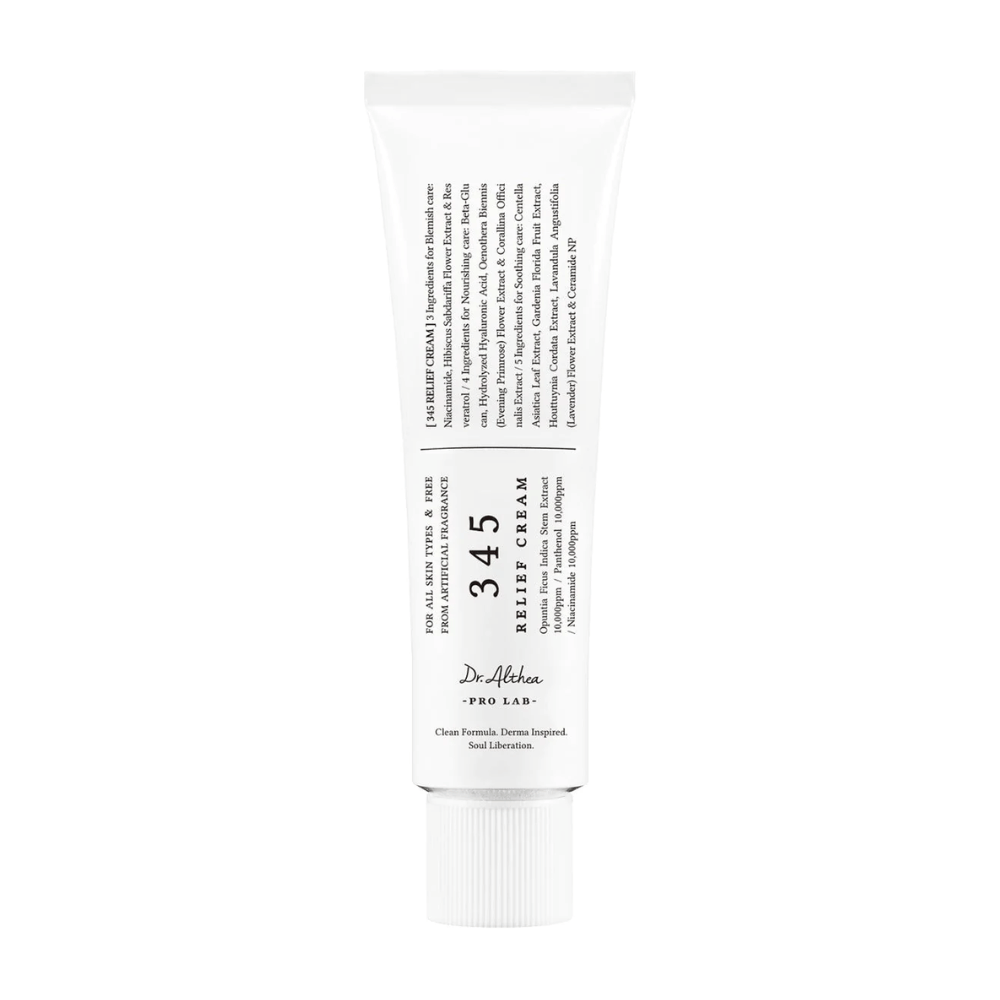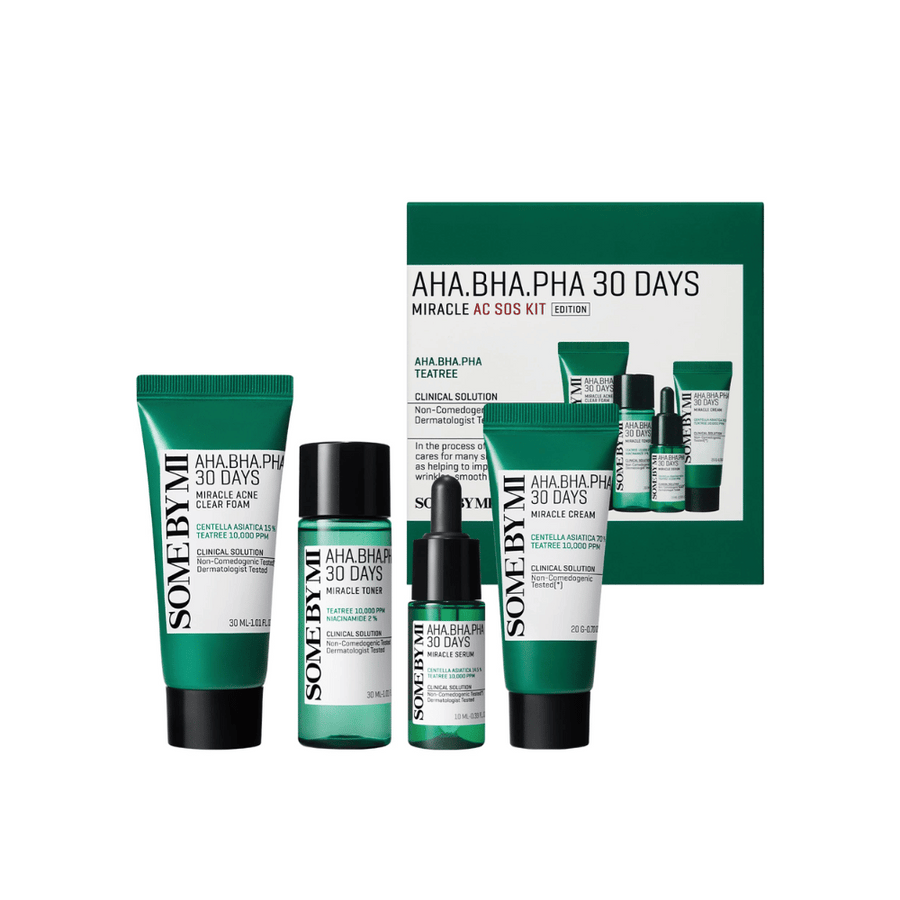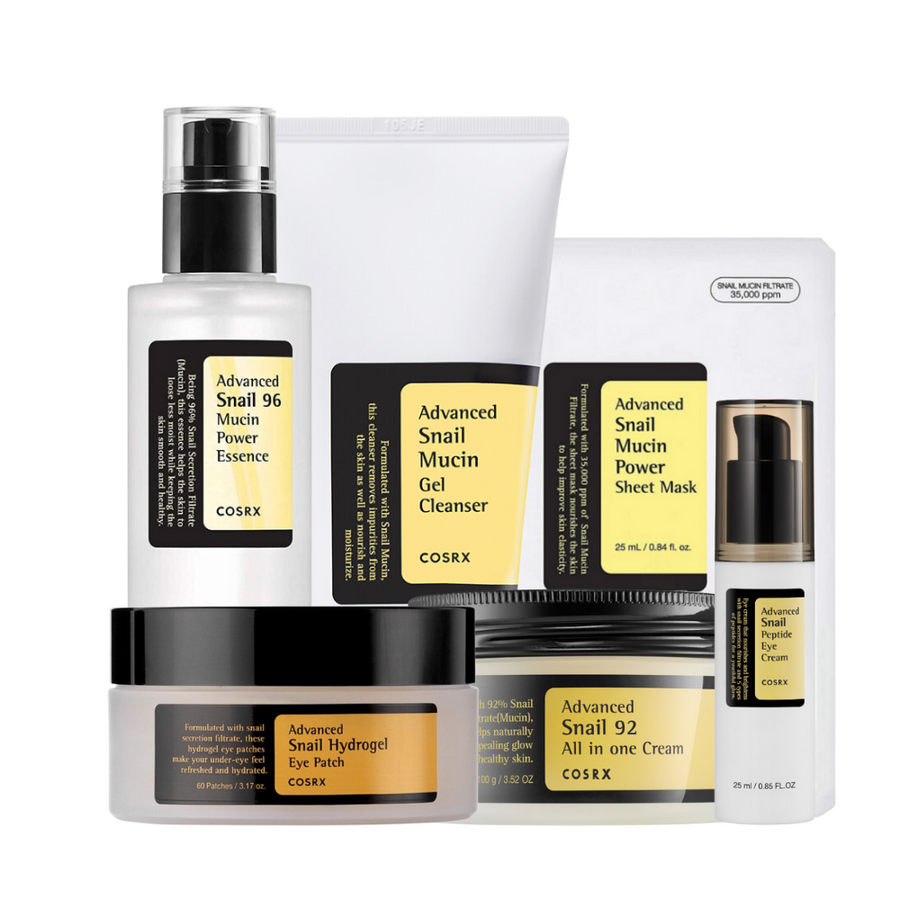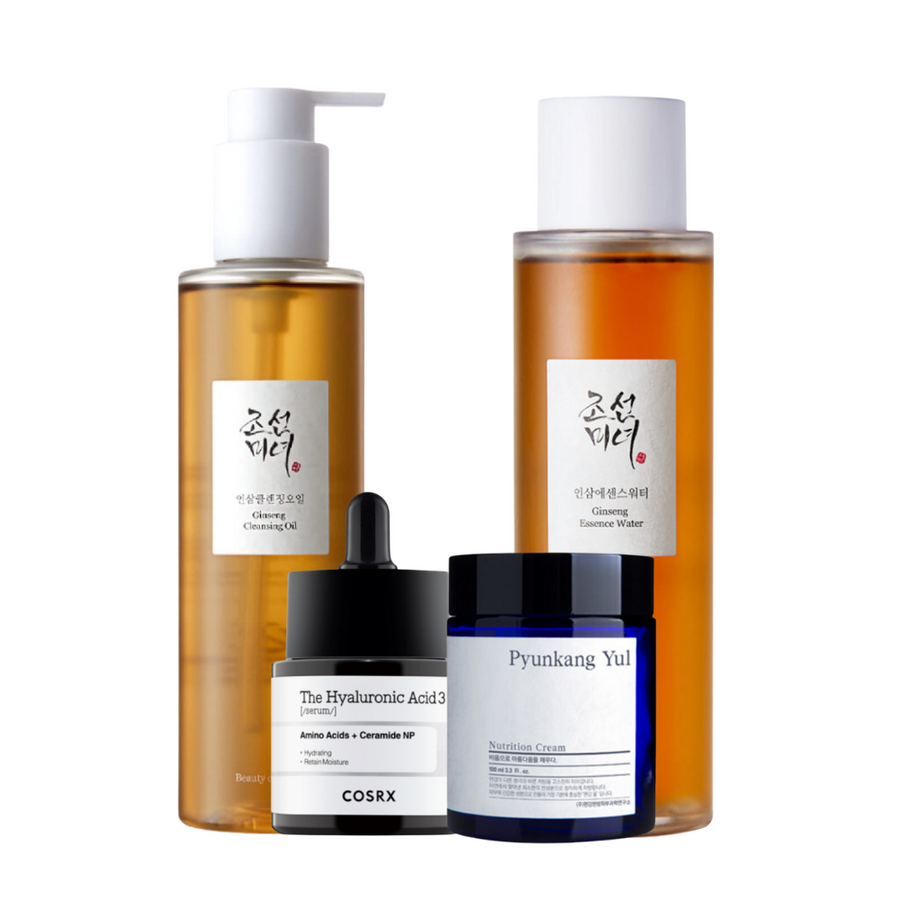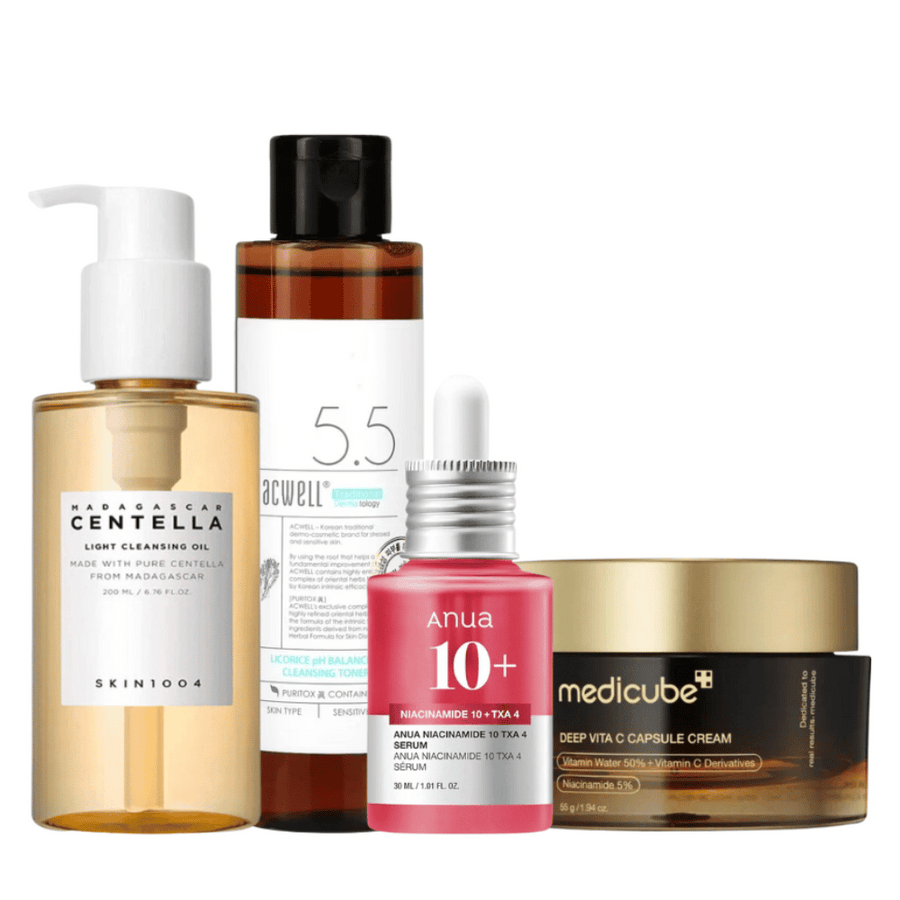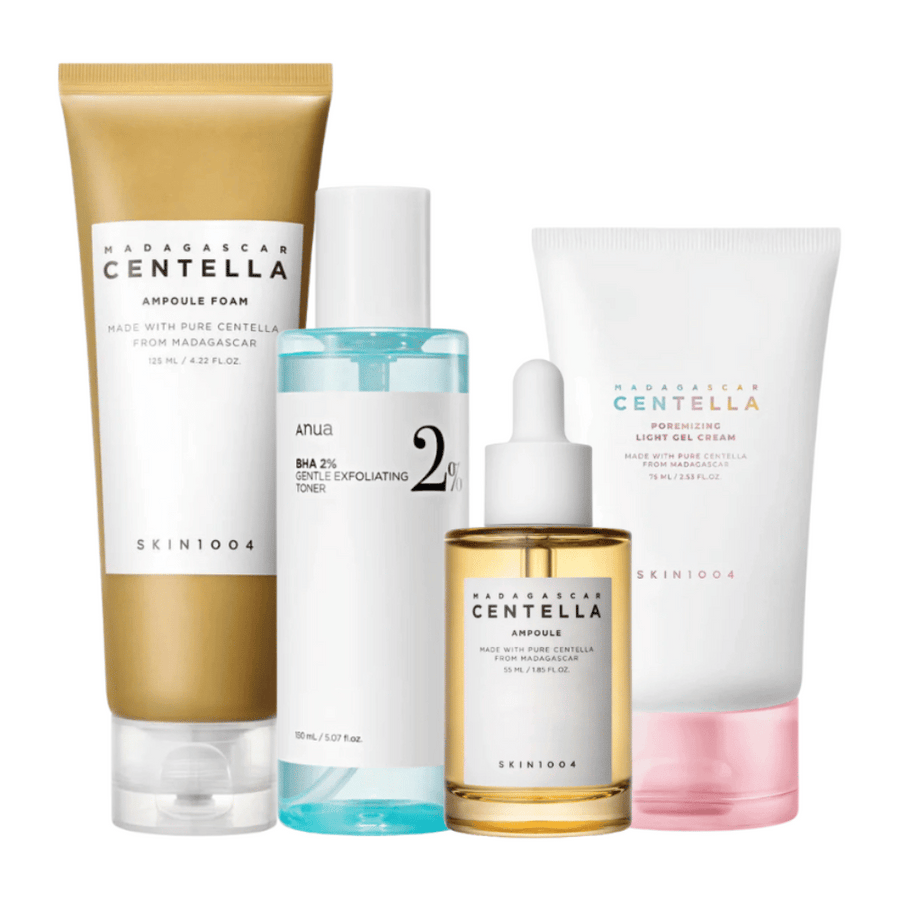How to Identify Your Skin Type
Understanding your skin type is the first step towards a successful skincare routine. Your skin type, whether it is normal, dry, oily, or combination, affects which products and ingredients are best suited for you. In this post, we go through a simple home test to determine your skin type, the most common characteristics and concerns for each skin type, and which ingredients you can look out for. Let's start the journey towards a skincare routine tailored just for you!
Simple Method to Test Your Skin Type at Home
Before identifying your skin type, start with a gentle cleansing. Let the skin rest without products, which gives the most accurate result. To reliably determine your skin type at home, you only need a few simple steps, no complicated questionnaires or expensive salon tests. Here's how to do it.
Cleanse the Face
Wash your face with a gentle, pH-balanced facial cleanser and pat the skin dry. Do not apply any creams or serums afterward – the skin should be completely clean and neutral.
Wait
Let the skin rest for about 30–60 minutes without any products. During that time, avoid touching your face. This gives the skin a chance to return to its natural state.
Paper Test (Optional)
If you wish, you can gently press a thin facial tissue or a blotting paper against different parts of your face – forehead, nose, chin, and cheeks. This step helps you see how much oil the skin releases.
Analyze the Results
Look and feel how your skin is doing after an hour (and inspect the paper if you did the paper test).
- Dry Skin. If the skin feels tight, matte, or flakes easily, you likely have dry skin. The facial tissue will show little to no oil at all.
- Oily Skin. If the face looks shiny, especially in the T-zone (forehead, nose, and chin), it is likely oily skin. The paper test shows clear oil spots on most areas.
- Combination Skin. If some areas (especially the T-zone) are oily while others (e.g., the cheeks) feel dry, you most likely have combination skin. The paper absorbs oil mainly from the forehead, nose, and chin, but very little from drier areas.
- Normal Skin. If your skin feels neither particularly dry nor oily, but balanced and comfortable, you are lucky to have normal skin. The paper test shows in this case no or only minimal oil.
Tip: Preferably do the test in the afternoon or evening when the skin has had time to produce oil during the day. Also, consider that factors like weather and humidity can affect your skin, dry winter air can make the skin drier, while humid summer heat can increase oil production.
Once you have identified your skin type, you can more easily tailor your skincare routine. Below we go through the four most common skin types, typical problems for each, and ingredients that tend to be especially helpful.
Normal Skin
Characteristics : Normal skin (sometimes called balanced skin) is neither particularly oily nor particularly dry. The pores are usually small to medium-sized, and the skin has good circulation. It often feels soft and even without extreme areas. If you have normal skin, you rarely have recurring problems with pimples or dry patches – the skin "behaves" for the most part.
Common issues: Even normal skin can, of course, react to the wrong products or environmental changes. Sometimes it can become somewhat shiny in the T-zone or a little dry on the cheeks depending on the season, but overall, the issues are few. It is still important to care for the skin to maintain balance. Sun, stress, and aging can affect even normal skin, so preventive care is wise.
Ingredients to look for: For normal skin, it's mostly about maintaining balance and protecting the skin. Mild cleansers that do not disrupt the skin's natural oils are a good foundation. Moisturizers like hyaluronic acid help retain the skin's moisture, and antioxidants like vitamin C or vitamin E can add radiance and protect the skin from environmental damage. A light day cream with SPF is important for sun protection, and a slightly richer night cream helps the skin recover. Normal skin tolerates most things, so here you can experiment carefully and find what makes your skin glow.
Dry skin
Characteristics: Dry skin produces less natural oils (sebum) than other skin types. The skin may feel tight after washing, look dull, and sometimes become flaky or peel, especially during cold and dry periods. The pores are usually small. Dry skin can also be more sensitive because the skin barrier is weakened when moisture is low.
Common issues: When the skin is dry, it lacks both moisture and oil, which can lead to redness, itching, and sometimes cracking if it is extremely dehydrated. Many with dry skin experience that the face feels as tight as parchment after cleansing and that fine lines are more visible when the skin is superficially dry (dehydrated on the surface). Dry skin is also particularly vulnerable to cold weather and low humidity – in winter, it may need extra care.
Ingredients to look for: The focus for dry skin is hydration and strengthening the skin barrier. Look for moisture-binding ingredients like hyaluronic acid and glycerin, which attract and retain moisture in the skin. Aloe vera is also beneficial, as it soothes and hydrates dry, sensitive skin. Nourishing substances like shea butter and natural oils (e.g., almond or jojoba oil) provide fats that soften and protect. Check for ceramides, which are skin-identical fats; they act like a "winter coat" for the skin and help seal in moisture and repair the barrier. Another hero for dry skin is niacinamide (vitamin B3) in low concentration, as it can strengthen the barrier and counteract irritation. Don't forget to always finish with a rich moisturizer that "locks in" all moisture, and use sunscreen during the day (the sun can dry out and damage dry skin further)
Oily Skin
Characteristics: Oily skin is characterized by overproduction of sebum – the skin becomes shiny and oily, often quite quickly after cleansing. It is most noticeable in the T-zone, but a truly oily skin type can have an oily sheen over the entire face. The pores are often larger and more prominent, and the skin can feel thicker in texture.
Common Problems: Excess oil easily leads to clogged pores, blackheads, and pimples. Many with oily skin struggle with acne breakouts or uneven skin texture. The skin can also become shiny during the day in a way that can feel bothersome. Ironically, those with oily skin sometimes try to "dry out" the skin with strong drying products – but this can trigger the skin to produce even more oil in defense. Oily skin still needs moisture, but of the right kind, to feel good.
Ingredients to Look For: For oily skin, it's important to balance sebum production and keep the pores clean. A good routine starts with a cleanser that preferably contains salicylic acid (BHA) – an acid that penetrates into the pores and dissolves sebum and dirt. Niacinamide is another star ingredient: it helps regulate the skin's oil production and can reduce the appearance of enlarged pores. Ingredients that are mildly astringent or antibacterial can also help; for example, tea tree oil is known for fighting bacteria and shininess in oily skin. For hydration, choose a lightweight moisturizer in gel or lotion form that is oil-free and non-comedogenic (i.e., not pore-clogging). Look for soothing, oil-free moisturizers like aloe vera or green tea extract that hydrate without weighing the skin down. Even vitamin A (retinol) can be good in low doses at night, as it increases cell turnover and helps keep the pores clean. Don't forget exfoliation: regular mild exfoliation with BHA (or AHA/PHA) keeps the skin clear and helps with both pimples and shine.
Combination Skin
Characteristics: Combination skin (also called combination skin) means you have two or more skin types at the same time on your face. Typically, the T-zone (forehead, nose, chin) is oily or shiny, while the cheeks and sometimes the temples are dry or normal. It can almost feel like you have an oily area in the middle of the face and drier skin around it. The pores can be larger in the T-zone and finer on the cheeks.
Common Problems: The challenge with combination skin is that it can both get pimples and shiny areas and suffer from dryness or flaky skin in other places. For example, you might have a shiny forehead with blackheads while the cheeks feel tight after washing. Finding a single routine that suits everything is tricky – if you use too rich products, the T-zone can break out, and if you only use light, drying products, the cheeks become even drier. Climate can also affect: in the summer you might feel more towards the oily side and in the winter more dry on the cheeks.
Ingredients to Look For : For combination skin, it's about balance and sometimes treating different parts differently. A mild, balancing cleanser that doesn't dry out the dry areas but still effectively cleanses the T-zone is a good start. Avoid strong soaps, and instead use gel or cleansing cream that is pH-balanced. When it comes to moisturizing, you may need to combine products: for example, a lighter, oil-free lotion in the T-zone and a richer cream on the cheeks. Ingredients like niacinamide are excellent for combination skin as well, as it is a true all-round ingredient that can both regulate sebum and strengthen the skin barrier. Hyaluronic acid is also good for the entire face to provide moisture without oil. You can also try multi-masking, i.e., using a clay mask on the oily areas (to absorb excess oil) and a moisturizing mask on the dry areas. Finally, don't forget sunscreen – choose a lighter variant (e.g., gel or fluid) that doesn't make the T-zone too shiny but still provides protection for the cheeks.
Final Tips
Remember that your skin type can change over time and be affected by hormones, age, and environment. Therefore, it is good to occasionally evaluate how your skin is doing. Regardless of skin type, consistent care and gentle treatment are key to healthy skin. Be kind to your skin, don't scrub too hard on dry skin, and don't dry out oily skin with strong products.
Hopefully, you now have a clearer picture of whether you have normal, dry, oily, or combination skin and what your skin's needs are. With the right knowledge, you can more easily choose products with ingredients that make your skin thrive. Good luck with your skincare routine. Your skin will thank you with a wonderful glow and balance!

Amanda Jensen
Amanda is a passionate beauty expert with extensive experience in Korean skincare, haircare, and makeup. She loves testing new products, delving into ingredients, and sharing tips that help you find what truly works. You can reach Amanda at info@koreanbeauty.se for questions or feedback.



